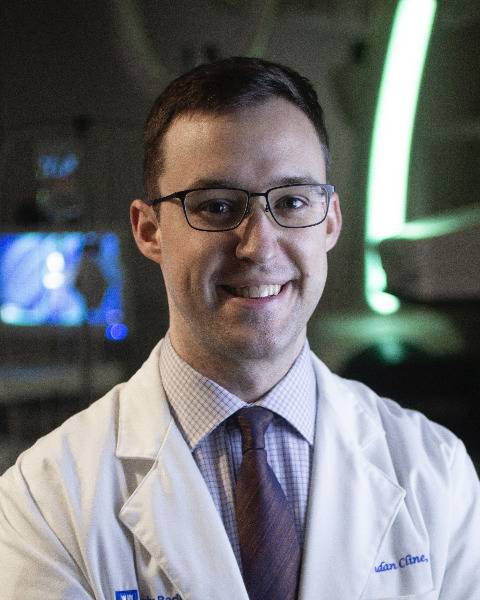SIR 2025
Portal Hypertension
Scientific Session
Impact of TIPS Stent Angle on Shunt Dysfunction with Comparison of Fluoroscopic and Cross-Sectional Angle Measurements

Elias DE Calkins, MD (he/him/his)
PGY6 IR Resident
Duke University Hospital, United States
Vikram F. Gupta, MD (he/him/his)
Resident
Duke University Health System, United States
Brendan Cline, MD
Assistant Professor of Radiology
Duke University Health System, United States
Nicholas T. Befera, MD
Assistant Professor of Radiology
Duke University, United States
Jonathan G. Martin, MD (he/him/his)
Associate Professor of Radiology
Duke University Health System, United States- WP
Waleska Pabon-Ramos, MD, MPH (she/her/hers)
Associate Professor of Radiology
Duke Health, United States 
Paul Suhocki, MD
Associate Professor of Radiology
Duke University Medical Center, United States
Charles Y. Kim, MD, FSIR
Professor and Chief of Interventional Radiology
Duke University, United States- JR
James Spencer Clayton Ronald, MD, PhD, FSIR
Associate Professor of Radiology
Duke University Health System, United States
Presenting Author(s)
Author/Co-author(s)
A patent TIPS provides excellent treatment for complications of portal hypertension, however shunt stenosis or thrombosis, though rare, is an important long term complication. Shunt angles may contribute to risk of stenosis or thrombosis. The purpose of this study is to evaluate whether TIPS stent angles correlate with the incidence of shunt dysfunction.
Materials and Methods:
In this single center retrospective study on 580 patients who had a TIPS placed from 2005 through 2022, patients with subsequent cross-sectional imaging (n=64) were identified. On both 2 dimensional fluoroscopy and subsequent CT or MRI with multiplanar reconstructions, the alpha angle (shunt to portal vein), beta angle (shunt to hepatic vein), and the theta angle (angle formed by orthogonal lines from the covered stent ends relative to each other, an indicator of total curve of the stent). Statistical analysis performed with student T tests.
Results:
Of the 64 patients in the study cohort, 30 patients required TIPS revision and 34 did not. Using CT measurements, higher beta angles as measured on CT were significantly associated with TIPS dysfunction (+10.1 deg, p=0.026). There was no significant association with alpha or theta angles (+5.04 deg, p=0.44; -2.03 deg, p=0.73 as measured on CT). Of the 22 patients who had TIPS placed with ICE and 42 patients who had TIPS placed without ICE, no significant difference was identified in the alpha, beta, or theta angles on CT measurements (+10.6 degrees, p=0.12; 6.5 degrees, p=0.12; 2.57 deg, p=0.68). Comparing measurements on cross sectional versus fluoroscopy, there was a significant increase in measured alpha angles (mean +6.6 degrees, p=0.012) and theta angles (mean +17.3 degrees, p< 0.001), with a trend toward significance of the beta angle (mean +3.2 degrees, p=0.10).
Conclusion:
In conclusion, higher beta (cephalad) angles demonstrated significant association with TIPS dysfunction and thus attempts to minimize this angle during TIPS creation may help to optimize patency. 2D images were noted to significantly underestimate TIPS stent angles, suggesting additional efforts to fluoroscopically evaluate orthogonal to the stent, or potentially employ cone-beam CT, may be helpful for intraprocedural assessment.


.jpg)